

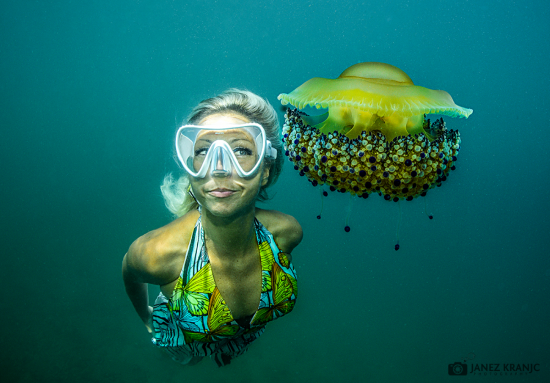
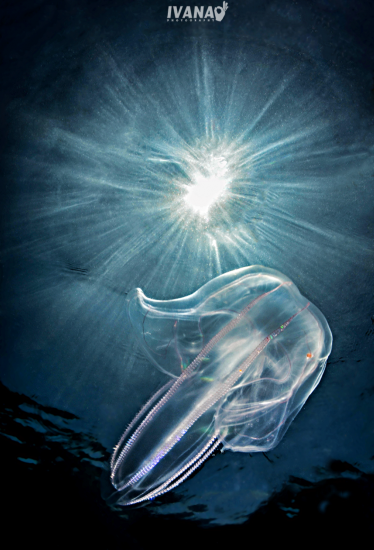
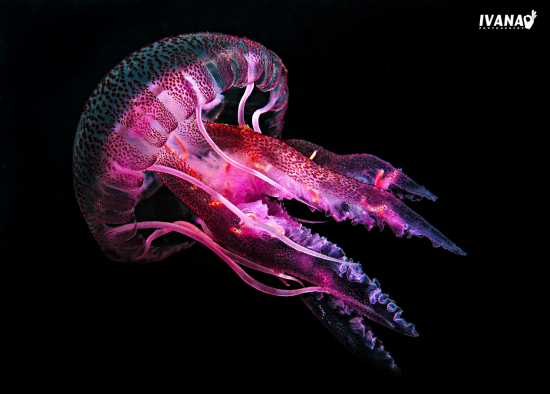
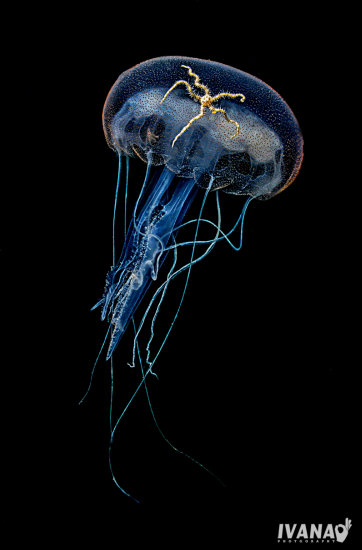
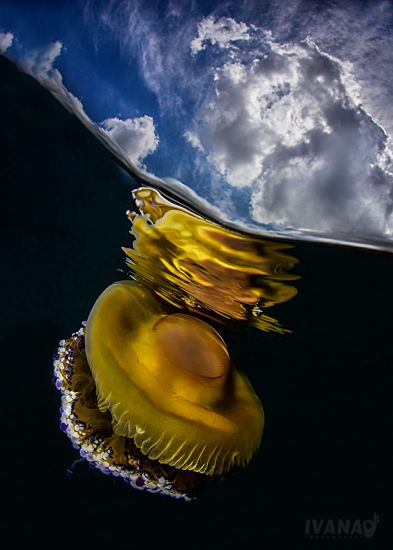
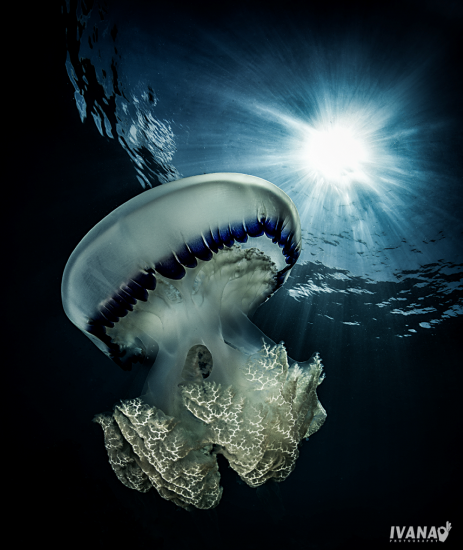
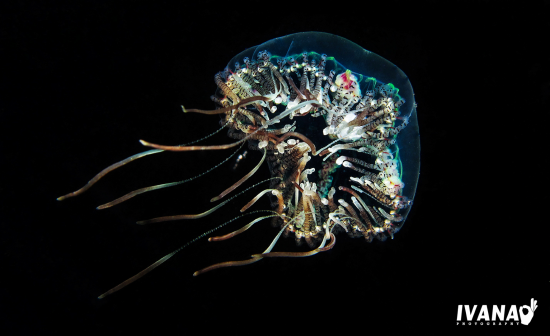
When I asked my child what jellyfish were, she said they are half fish, half jelly… Well nothing could be further from the truth, as they are not even remotely related to fish having no spine or organs. The only thing they have in common with fish is the environment they live in.
They have been around for millions of years and belong to the phylum Cnidaria which also includes corals and anemones. The name of the class Scyphozoa they belong to originated from a Greek word meaning “cup” animals.
Composed of 94% water, radially symmetrical with two tissue layers, you would think that they are very primitive organisms. Most jellyfish however have lobes with sense organs and light sensors which they use for balance and orientation and tentacles used for catching food.
They can range from a few cm in size to a few meters.
They can be found everywhere, in shallow coastal waters, in deep open oceans and even live in fresh water. Most are translucent and some are very small so it is hard to see them, some are big and colourful living in symbiosis with zooxanthellae (the same organisms that give corals their colour) and easily spotted, they can also be bioluminescent and glow in the dark. Some are venomous and some are totally harmless.
The jellyfish world is quite vast. They can be seen in swarms but also solitary and their distribution and numbers helps to regulate ecosystems.
Two life forms: medusa in adult form - the jellyfish as we know it, and a free floating polyp as a juvenile, attached to the bottom of the water body they live in.
They have a short lifespan of just one year during which they reproduce twice, once asexually and once sexually. They drift in the seas with the currents and move by closing and opening their body, feeding on zooplankton and small fish by catching pray with their tentacles and releasing nematocysts (hook like structures) which paralyse their pray before pulling the victim into their mouth. The stinging cells (nematocysts) are a very effective mechanism for capturing food and scaring possible predators. Some are filled with poison and discharge into whatever they touch.
Freshwater jellyfish or hydromedusae are much smaller than their sea dwelling cousins. They are also white in colour and do not sting. They are very unpredictable and appear once a year or every few years, there is no pattern to their appearance. They are able to survive the cold in the winter in the form of resting bodies (podocysts) which is also believed to be the way that they are transported into the lakes in the first place on aquatic plants, animals and mainly birds where they wait until conditions become favourable to come to life again.
Most jellyfish are not dangerous to humans, causing a “burn like” sting at the most, but there are a few that are toxic such as the Lion’s Main jellyfish (Cyanea capillata) and Irukandji jellyfish (Carukia barnesi). To avoid a sting, protective suits should be worn when swimming / diving in affected areas. If stung any tentacles remaining on the skin should be deactivated with the use of vinegar / lime or lemon juice or any other high in acid liquid and removed immediately with forceps as even though they are not attached to the jellyfish, they are still capable of discharging the nematocysts. Heat also helps to relive the pain of a jellyfish sting and helps to deactivate the toxins. Treating the sting with urine is a myth! Do not pee on your dive buddy who just got stung! Wash it with vinegar or just saltwater instead.
Humans have used jellyfish in oriental cuisine for centuries, and eat them sliced, raw, or marinated in a salad or cooked form. They are a common dish in China, Vietnam and Korea. They are a delicacy for sea turtles (Leatherbacks especially) which depend solely on jellyfish for their diet eating Lion’s Main jellyfish - the biggest jellyfish of all, and control their population by eating them in large amounts to over 70% of their size per day, Sunfish (Mola mola) also eat jellyfish, making jellyfish a very important part of the food chain and essential to the ecosystem.
Recent blooms of jellyfish are a concern as they seem to reflect human activities in the seas and respond to pollution and overfishing.
Did you know that a group of jellyfish is called a “smack”?
Text: Bogna Griffin BSc Freshwater and Marine Biology, GMIT Ireland
Photos by: Ivana Orlovic Kranjc & Janez Kranjc
 Mares
Mares 1st September 2017
1st September 2017 GMIT, Irlanda, Galway City
GMIT, Irlanda, Galway City